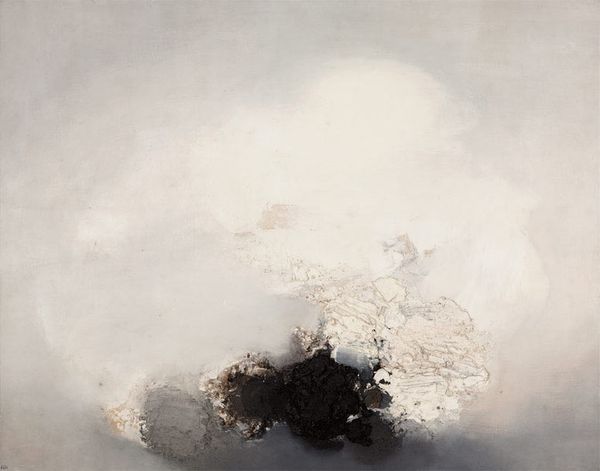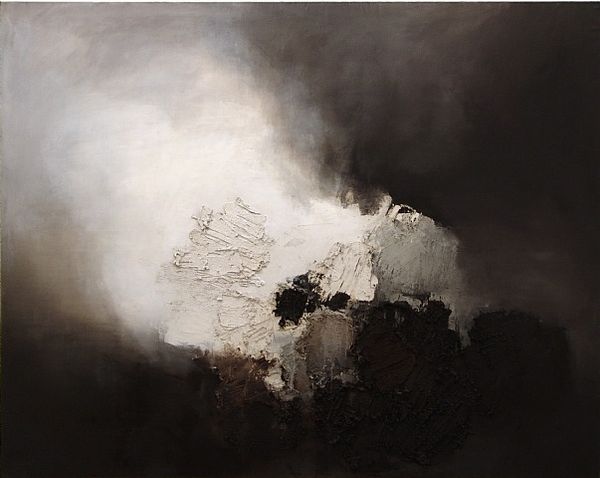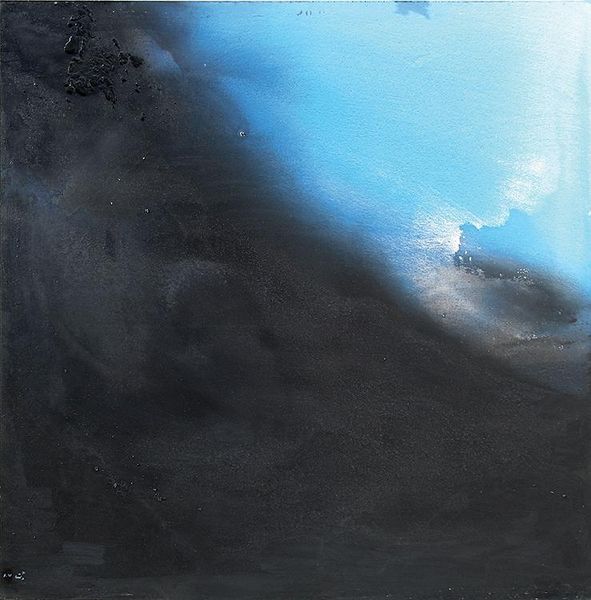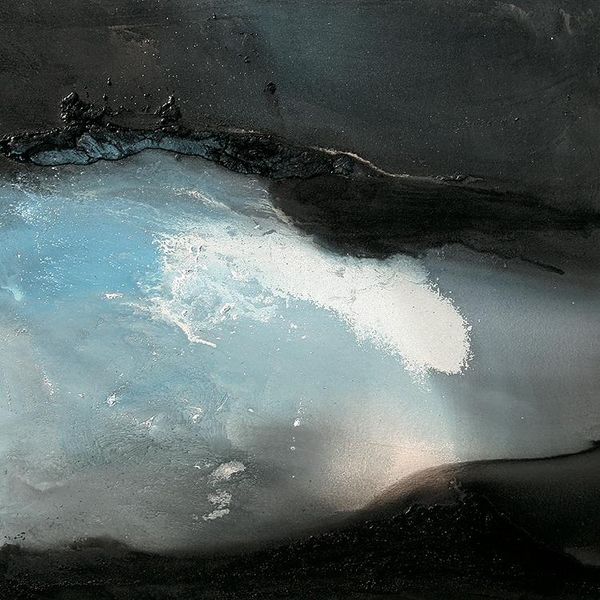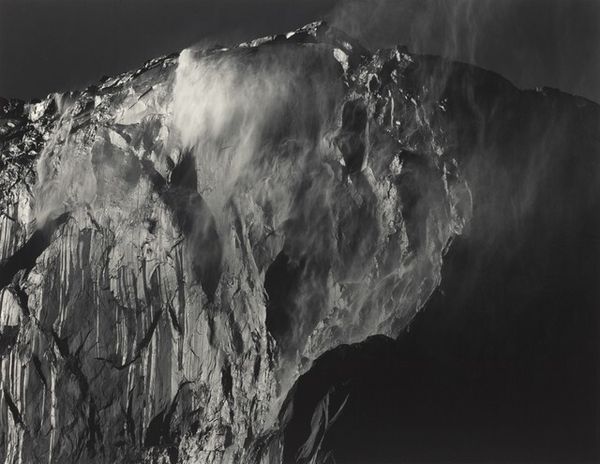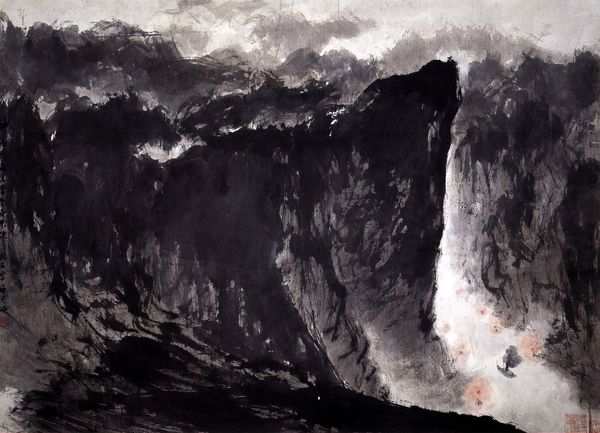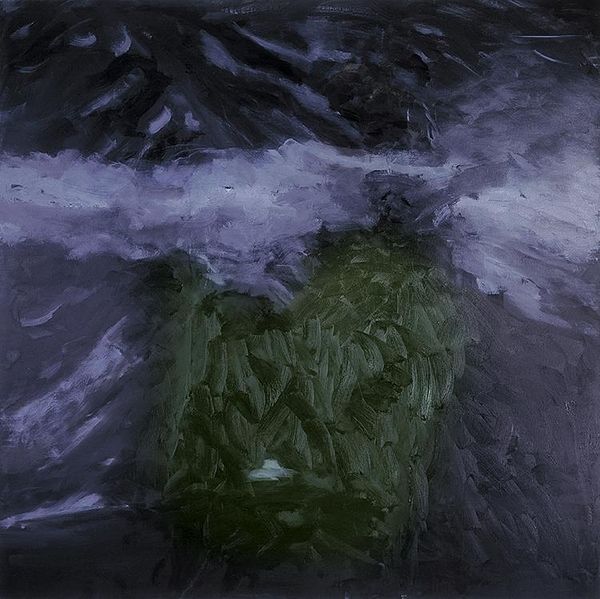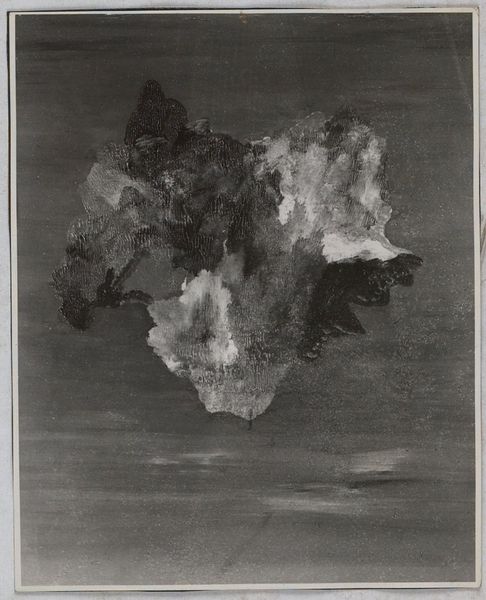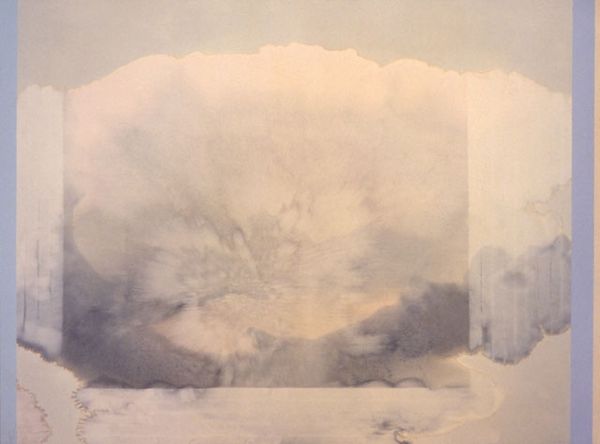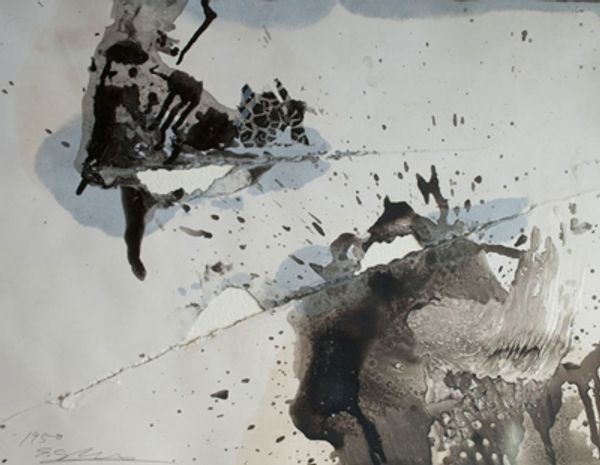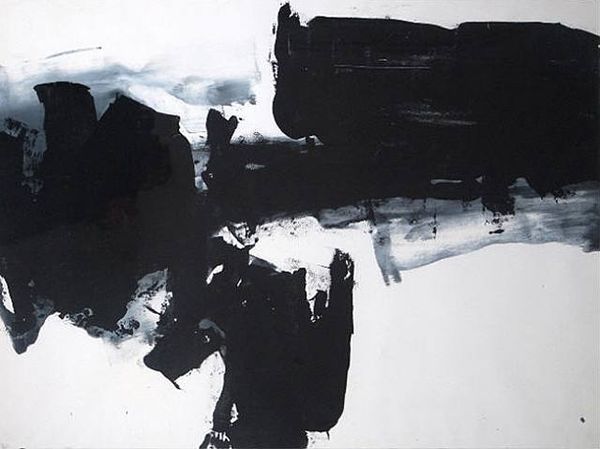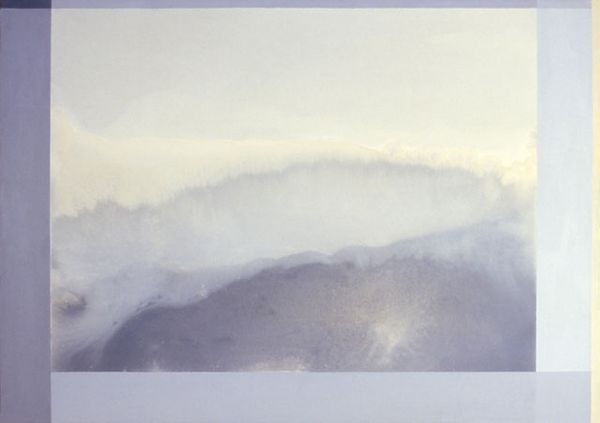
matter-painting, painting, acrylic-paint
#
abstract-expressionism
#
abstract expressionism
#
acrylic
#
matter-painting
#
painting
#
acrylic-paint
#
abstraction
#
monochrome
Copyright: Luis Feito,Fair Use
Editor: We're looking at Luis Feito's "Painting 139", made with acrylic paint, classified as a "matter painting". I’m immediately struck by its dark, almost monochromatic palette, contrasted with a stark white shape. What can you tell me about this piece? Curator: This work, and Feito’s oeuvre, are compelling studies of materiality within the abstract expressionist movement. I want you to think about how acrylic paint, a relatively new material at the time, was used. Editor: It seems almost sculptural in its texture. Curator: Exactly. Forget the notion of 'mere' representation; consider the labor involved in building up these surfaces, the conscious manipulation of a modern industrial material to create something almost geological in its presence. We also need to place the making within it’s time: post-war Spain and the limitations/possibilities this presented to artists using modern materials to express themselves outside of traditional religious or portrait commissions. The almost monochromatic look would be much cheaper for Feito. Editor: So, the constraints around materials shaped the art itself? Curator: Precisely! Think about acrylics replacing traditional oils; the availability and cost directly influence artistic choices and output, shaping even abstract works like this one. Also, consider “matter painting”. What social values underpinned a move from figurative painting towards raw, pure pigment as matter? It challenges the commodification of art. It has weight, texture…matter! It speaks to something primal. Editor: It really does shift my perspective, viewing it not just as an image but an object born from specific material conditions and choices. I never thought about raw pigment like that before. Curator: That's the crux of a materialist lens – unveiling the hidden dialogues between art, labor, and the world it occupies.
Comments
No comments
Be the first to comment and join the conversation on the ultimate creative platform.
